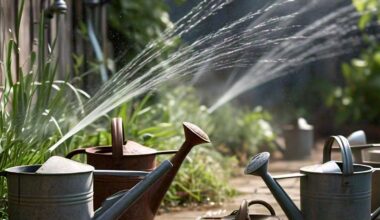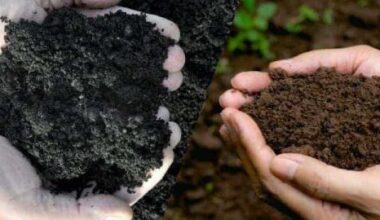Have you ever wondered what the differences are between tilling and disking? We often hear these terms in farming circles but do we really understand what they mean? I know, it sounds like an episode of ‘Farming Terminology 101’, right?
Tilling vs disking; these two soil preparation methods seem to dance around each other. Each has its unique rhythm, its special charm even though – at first glance – they look somewhat similar. You see, both practices aim to prepare your land for planting by breaking up the soil – but their techniques and end results can be as different as night and day.
So prepare your mind: we’re about to dig deep into tilling versus disking – unearthing their peculiarities, applications, advantages, and disadvantages like never before! So lean back and stay tuned because things are going to get interestingly muddy here!
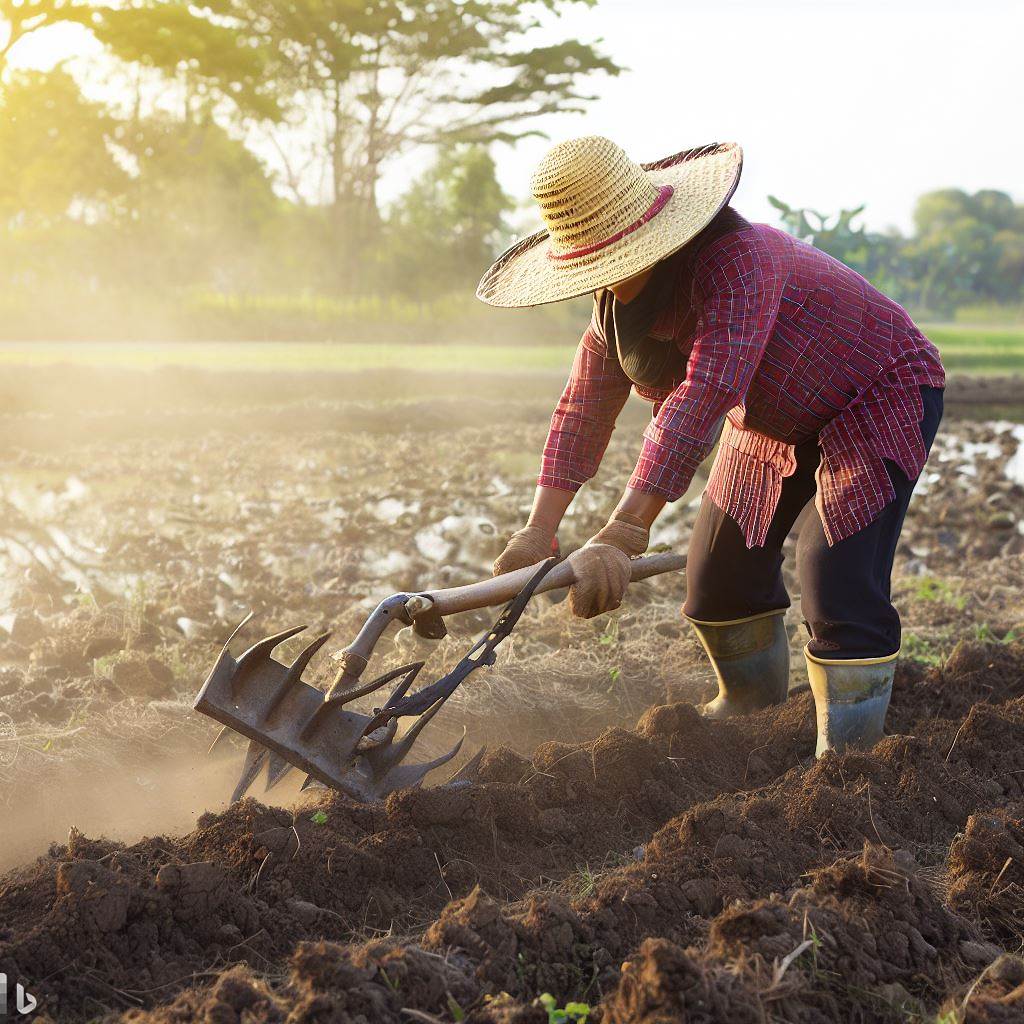
Definition and Purpose of Tilling
Tilling, also known as plowing or cultivation, refers to the process of breaking up and turning over the soil in preparation for planting crops or gardening.
It involves using specialized tools, such as a tiller or plow, to loosen compacted soil and create a favorable environment for seed germination and root growth.
One of the main purposes of tilling is to improve soil structure by increasing its porosity. This allows air, water, and nutrients to penetrate deeper into the ground, enhancing overall plant health.
Additionally, tilling helps control weeds by uprooting existing vegetation and burying weed seeds deeper into the soil where they are less likely to sprout.
While tilling can be beneficial in certain situations, it’s important to consider both its advantages and disadvantages before deciding whether it’s suitable for your garden.
Advantages of Tilling
Soil Aeration: Tilling promotes better airflow through the soil by breaking up compacted layers that inhibit oxygen exchange. This ensures that plant roots have access to sufficient oxygen.
Weed Control: By disturbing weed seeds buried deep within the soil during tilling, you can effectively reduce weed populations without relying heavily on herbicides.
Incorporation of Organic Matter: Tilling facilitates mixing organic matter (such as compost) into the topsoil layer. This improves nutrient availability and enhances moisture retention.
Pest Management: Tilling disrupts habitats favored by pests like grubs or beetles. It exposes them to predators while helping you identify signs of infestation early on.
Disadvantages of Tilling
Soil Erosion Risk: Intensive tilling increases susceptibility to erosion since bare soils are more prone to water runoff compared to those covered with vegetation.
Soil Structure Damage: Excessive tilling can lead to soil compaction, especially in heavy clay soils. This reduces water infiltration and root penetration, negatively impacting plant growth.
Weed Seed Germination: Tilling can bring dormant weed seeds closer to the surface, creating ideal conditions for germination. Without proper management, this may result in increased weed pressure.
Nutrient Loss: Intensive tilling can accelerate nutrient leaching as it disrupts soil aggregates that hold essential elements like nitrogen and phosphorus.
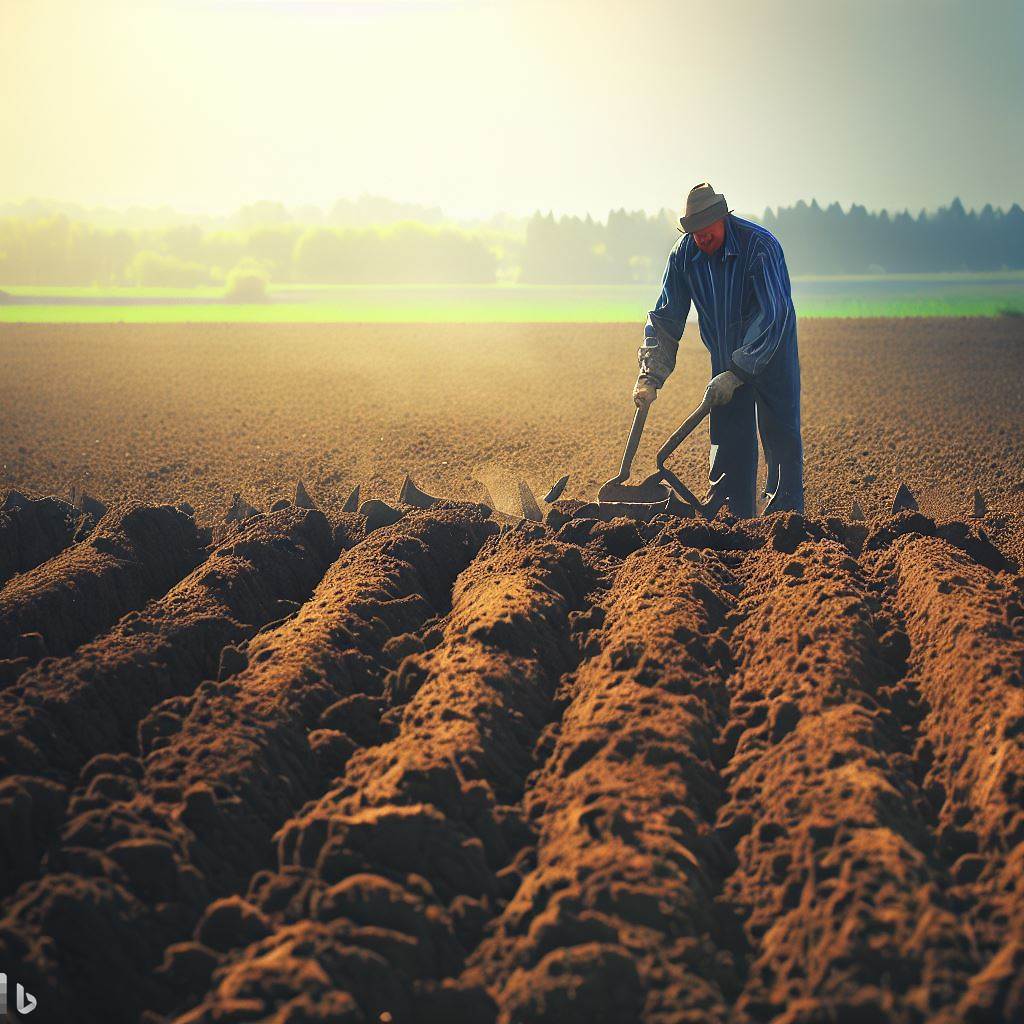
Process of Tilling
The process of tilling involves several steps and considerations:
1. Equipment Selection
Choose the appropriate tillage tool based on your specific needs and garden size. Small gardens may require a handheld cultivator or a lightweight electric tiller, while larger areas may necessitate a tractor-mounted plow.
2. Timing
Timing is crucial when tilling your garden. Wait until the soil reaches the right moisture content – not too wet to prevent compacting or too dry to avoid clumping.
3. Preparation
Remove any large rocks or debris from the designated area before beginning the tilling process to prevent damage to equipment.
4. Depth Adjustment
Adjust the depth setting on your tiller according to your desired outcome or crop requirements. Shallow tillage helps control weeds near the surface without disturbing deeper roots, while deep tillage loosens compacted layers for improved drainage.
5. Technique
Start at one end of your garden plot and work your way across systematically, overlapping each pass slightly for even coverage. Avoid making unnecessary extra passes as this can further disturb beneficial organisms within the soil.
6. Best Practices:
– Practice conservation strip-till methods by leaving undisturbed strips between rows where possible, reducing overall disturbance while still providing some benefits of partial cultivation.
– Utilize cover crops during fallow periods as they help improve soil quality, reduce erosion risk, and suppress weed growth.
– Consider reduced tillage or no-till methods for long-term soil health benefits in established gardens.
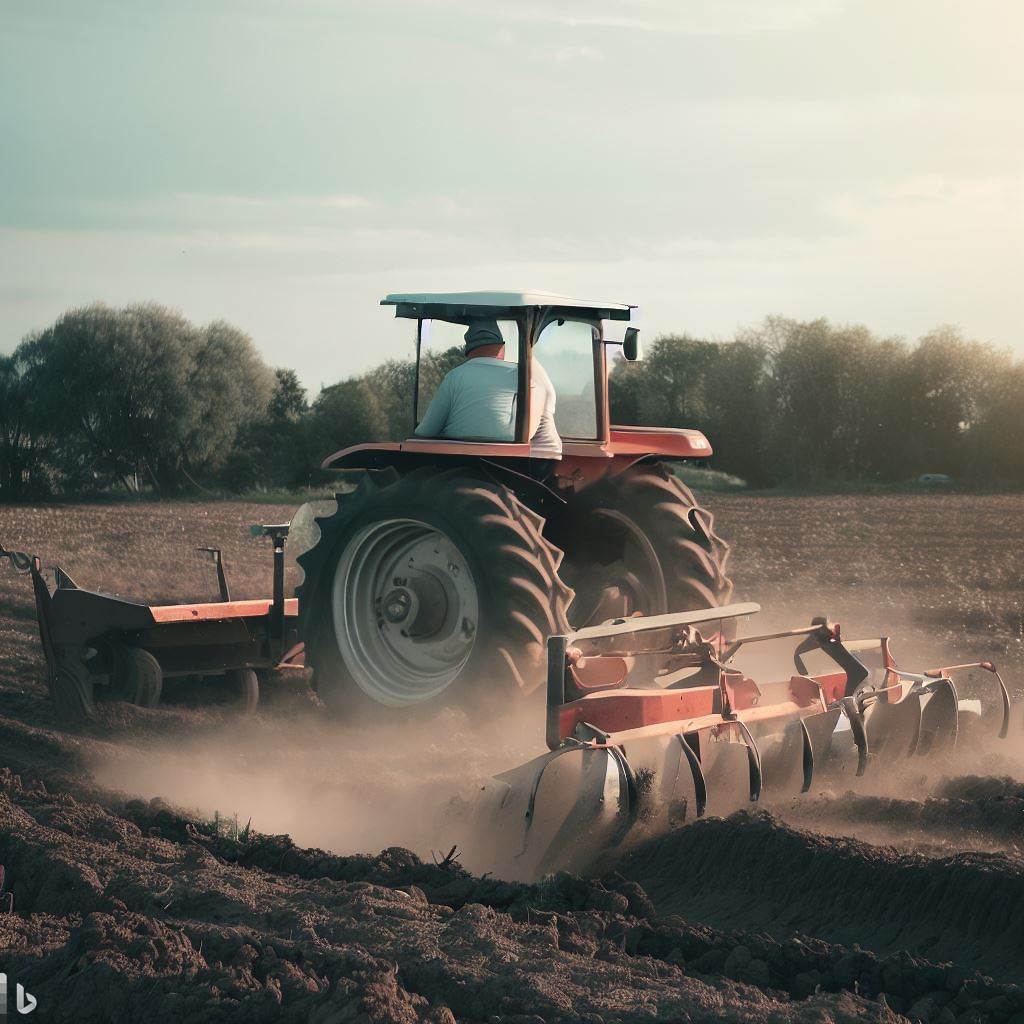
Definition and Purpose of Disking
Disking is a process used primarily in large-scale farming operations to prepare the soil for planting crops.
It involves using a disk harrow, which consists of two or more circular metal disks attached to a tool that rotates them into the ground.
The purpose of disking is very similar to tilling – to break up compacted soil, control weeds, incorporate organic matter, and create an ideal seedbed.
However, there are some differences in terms of the equipment used and the methodology employed.
Advantages of Disking
Faster Operation: Disks cover larger areas more quickly compared to traditional tilling tools like plows. This increases efficiency on large farms with extensive acreages.
Efficient Weed Control: The use of disks effectively cuts through weed roots during the disking process, providing better control by destroying existing vegetation.
Incorporation of Crop Residues: Disking helps break down crop residues from previous harvests into smaller pieces that can be easily mixed back into the soil as organic matter.
Improved Water Infiltration: By breaking up compacted layers within the soil profile, disking enhances water infiltration rates while reducing surface runoff.
Disadvantages of Disking
Soil Compaction Risk: While disking can initially loosen compacted soils at shallower depths than plowing traditionally does, excessive passes may lead to compaction at much deeper levels
Loss Of Organic Matter: Repeated disking might accelerate decomposition processes, causing essential carbon content loss if not compensated with proper addition measures
Increased Fuel Consumption: Since disking requires powerful machinery such as tractors, it results in increased fuel consumption along with higher operational costs.
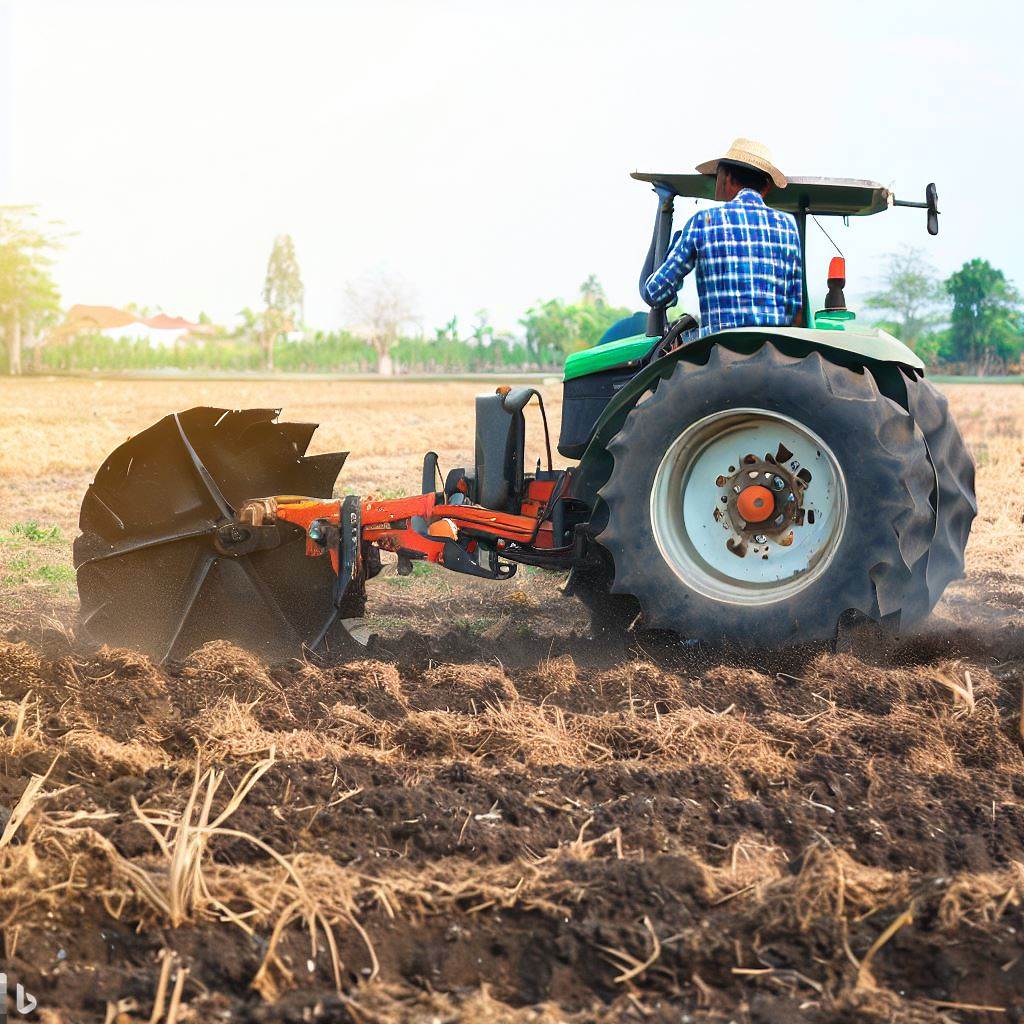
Methodology for Disking
Successful disking requires following certain guidelines and making informed decisions regarding equipment, tactics, and optimum conditions.
1. Equipment Selection
Choose a disk harrow that matches the size of your farming operation. Consider factors such as disk diameter, spacing between disks, number of disks, and weight to achieve desired results.
2. Plot & Field Preparation
– Remove debris or obstacles that could interfere with the disking process
– Determine the appropriate depth setting for your specific application.
3. Moisture Level Assessment
Soil should be moist enough to allow easy penetration by the disks while ensuring it’s not too wet to cause compaction issues. Perform a simple squeeze test on the soil sample prior to disk plowing.
4. Timing Considerations
– Disk when most weeds are actively growing but haven’t yet produced seeds can help reduce weed burden in subsequent crop cycles
– Avoid disk plowing immediately after heavy rainfall or during unfavorable weather conditions (e.g., excessive wind) which may damage soil structure
Comparison between Tilling vs Disking
Soil Benefits
Both tilling and disking contribute to improving soil health through enhanced nutrient availability and water infiltration rates.
However, TIlling has an advantage by significantly increasing organic matter incorporation due to its thoroughness, enhancing microbial activity. While disking is effective in incorporating crop residues more efficiently than traditional tilling methods
Crop Yields
The choice between tilling and disking can influence crop yield outcomes. Tilled soils are generally looser compared to those subjected solely to disking, resulting in better root penetration.
However, repeated tillage operations can lead to solid compaction over time. This makes disking a favorable option, especially on heavier clay soils where tillage is discouraged
Environmental Impact
Tilling and disking both impact the environment; however, their influence differs. Tilling increases soil erosion risk due to exposed bare soil but presents an opportunity for better weed control through the burial of weed seeds.
On the other hand, disking minimizes erosion by leaving some residue on the ground surface but can increase fuel consumption from using heavy farm machinery.
Conclusion
Choosing between tilling and disking depends on various factors such as garden size, desired outcomes, existing soil conditions, and long-term sustainability goals.
While both methods have advantages and disadvantages in terms of soil benefits, crop yields, and environmental impact, TIlling is deemed more effective for small-scale gardening where maximizing organic matter incorporation within a short period is crucial.
Conversely, disking offers time-efficient plowing options with minimized compaction risks, especially in larger agricultural settings

